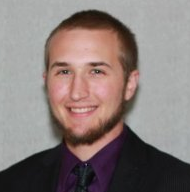
Recent advances in carbon capture create opportunities for recycling CO2 into liquid fuels to store intermittent renewable electrical energy. One option is to co-electrolyze CO2 and H2O at high temperature using solid oxide electrolysis cells (SOECs). Although promising, the factors controlling rates of CO2 and H2O reduction in SOECs are not well understood, hampering development. Traditional electrochemical techniques have difficulty resolving the various kinetic and transport rates. To overcome this, I will measure the rate of change of gas phase species with electrochemical impedance to give a set of stringent criteria for determining reaction mechanism and kinetics. This involves differential electrochemical mass spectrometry coupled in-operando with linear and non-linear electrochemical impedance spectroscopy (EIS and NLEIS) to study co-electrolysis on representative material CeO2 doped with perovskite LaSrCrMnO3. The advantage of NLEIS is its deconvolution of complex signals which can reveal hidden mechanisms that EIS only measures the net rate of.
Advisor: Eric Stuve – Chemical Engineering



